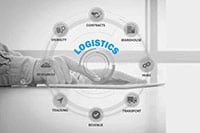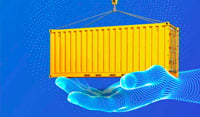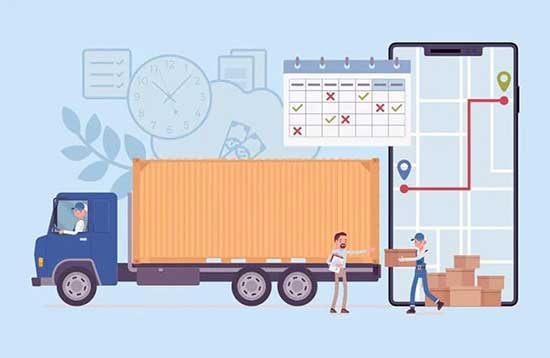
Warehouse Management System (WMS) Software
Streamline and scaleup Warehouse Efficiency and Accuracy
Request DemoIntegrated WMS for Logistics Service Providers
.png?width=70&height=70&name=Automation%20(1).png)
AUTOMATION
Complete Automation across Order Streaming, Planning & Allocation, Waving and Load Planning

DASHBOARDS
Integrated Heijunka Planning and Execution Dashboard

OPTIMIZATION
Robust Optimization that includes Space Utilization, Productivity, and Dynamic Slotting

INTEGRATIONS
Ecosystem Integrations that include Robotics, AGVs, ERPs, Order Management Systems, Shopping Carts, and Carriers

MOBILITY
Mobile App that supports activities that includes picking, scanning, packing, and sorting

MULTI-INDUSTRY COMPLIANT
Record and Maintain information on all the fixed assets and monitor the change in value
Supporting Features that Enhances Operational Efficiency

TRANSPORT MANAGEMENT SYSTEM
End to End Transport Management for Third Party Logistics, Freight Forwarder, Courier-Express, and Parcel

RATING & BILLING
Improve your on-time deliveries and optimize the cost of operations with a Digital Platform made for Logistics Service Providers

HUB MANAGEMENT
Exclusive Hub Management module to handle all Hub, Cross Dock Center & CFS activities
You may also like!

Integrated Logistics Platform: A growth framework for 3PLs
Download E-book
Ramco Logistics: Supply Chain Visibility & Analysis
View Webinar
Impact of Growing E-commerce on Logistics
View Webinar
Ramco Logistics Software - Overview
Download Brochure
Logistics and Finance: Sealing the gap
Download Whitepaper
Blockchain in Logistics
View Webinar
Digital Fitness for Logistics Service Providers
View Webinar
Tackle Uberization with Ramco Logistics
Download Whitepaper
Logistics Challenges addressed by Technology
Download Whitepaper
Digital Fitness for Logistics Service Providers - MENA
View Webinar
How can you stay afloat without visibility?
Download Whitepaper
Roadmap for Complete Supply Chain Visibility
Download WhitepaperOur Global Customers













Lets Start Driving Revenue
FAQs
A Warehouse Management System (WMS) is a key part of the supply chain and primarily aims to control the movement and storage of materials within a warehouse and process the associated transactions, including shipping, receiving, putaway, and picking. A WMS Software monitors the progress of products from the time it comes into the warehouse to when it leaves. It involves the physical warehouse infrastructure, tracking systems, and communication between product stations.
Warehouse management involves numerous complex processes, and a lack of efficiency can lead to significant operational delays and cost overruns. To address these challenges, many businesses turn to Warehouse Management Systems. These sophisticated software solutions help manage and optimize warehouse operations, leading to increased productivity, accuracy, and customer satisfaction.
Implementing a Warehouse Management software can offer numerous benefits:
- Increased Operational Efficiency: A WMS software can significantly improve your inventory management, leading to more efficient use of warehouse space and better order fulfillment. Your resource utilization could increase by 25% and planning speed could grow 10X.
- Cost Savings: By optimizing warehouse operations, a WMS Software can reduce labor costs and improve inventory turnover, leading to significant cost savings. It could result in up to 6% increase in EBIDTA.
- Improved Customer Satisfaction: With improved order accuracy and faster processing times, a WMS can greatly enhance customer satisfaction. Ramco WMS can help increase on-time deliveries by upto 15%.
- Real-time Inventory Tracking: WMS software provides real-time inventory information, helping businesses make informed decisions.
Scalability: A WMS can easily adapt to the changing needs of your business, making it a future-proof investment.
A Warehouse Management System (WMS) is a software solution that optimizes warehouse operations. It manages inventory levels, streamlines picking and packing processes, and improves overall warehouse efficiency.
The four main types of Warehouse Management Systems are:
- Standalone Systems: These are traditional systems that manage warehouse operations independently.
- Integrated Systems: These are part of a larger Enterprise Resource Planning (ERP) system.
- Cloud-Based Systems: These are hosted on the cloud and offer scalability and flexibility.
Open Source Systems: These are customizable systems that allow users to modify the source code to suit their needs.
The cost of a Warehouse Management System can vary greatly depending on the specific features, the size of the warehouse, and the complexity of the operations. It’s best to contact the software provider for a detailed quote.

